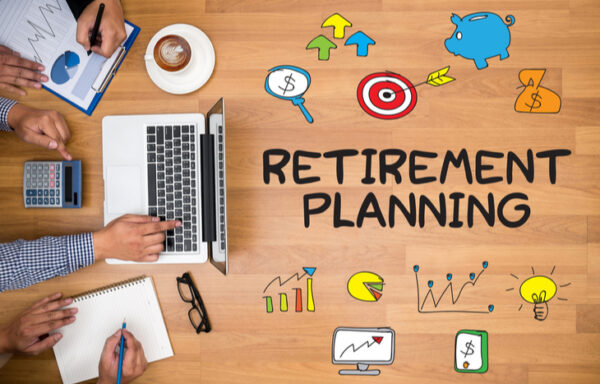What is the Accumulation Phase of Retirement Savings?
From the moment you make your first retirement contribution, you’ve entered the accumulation phase of your wealth-building journey. Whether you start at 20, 30, 40 or later, the foreseeable future of your working life will be about socking away money so you can retire. How you save is important—but what matters most is that you are saving.
Understanding the accumulation phase is key in maximizing your approach to retirement. You need to understand why you’re saving, as well as how to save intelligently. This involves goal-setting and education about different investment vehicles. Plus, you’ll need to understand compound interest as a tool for exponential wealth accumulation.
Here’s a rundown of what to expect in your accumulation years, and how it all adds up to a comfortable retirement.

What is the Accumulation Phase?
The accumulation phase is the time you spend earning money and contributing to retirement (and investment) accounts. The key aspect in defining this phase is that you’re still a “wage earner.” You have active income in the form of a regular paycheck. You’re taking money from that paycheck and investing it in vehicles designed to capitalize on compound interest.
It’s something most of us do without thinking about it. Nevertheless, it’s vital to appreciate the accumulation phase for what it is. Why? Because you have a lot of decision-making power during this time:
- How often you choose to save for retirement;
- How much you choose to save for retirement;
- What investment vehicles you choose to use;
- How you choose to diversify your holdings;
- And countless other investment variables.
Every decision you make during the accumulation phase lends itself to your eventual return on investment (ROI). Conscious wage-earners who make informed investment decisions will put themselves in a position to maximize the power of compound interest through smart investments.
The Power of Compound Interest
The “accumulation” part of the accumulation phase goes far beyond the amount of money you’re setting aside. When vested, that money is making money for you. Your rate of return—whether from security growth or dividend payments—adds up. And, with each passing month and year, you’re benefiting from compound interest.
The concept of compound interest is easy enough to understand. You take the rate of return and apply it to the principal amount. Then, you do it again, over and over. The key is that the principal amount is higher each time, since each new compounding event adds on top of the last. For example, say you start with $10,000 and have a 5% rate of return that compounds monthly. Here’s the power of compounding interest:
- In month one, you have the principal $10,000
- Month two, you have a balance of $10,500
- In month three you have a balance of $11,025
- Month four, you have a balance of $11,576.25
Each time the balance appreciates, so does its earning power. Over decades, this amounts to massive returns for investors who have the patience to maintain investment contributions. To see the power of compound interest using different variables, click here to use our investment calculator. You’ll see that a few simple decisions can have a profound impact on your ROI!
The Importance of a Long Accumulation Phase
With compound interest on your side, the longer you have to invest, the larger your ROI. Look at what a $10,000 principal becomes over time with no additional investment and a fixed rate of 5% return:
- After 10 years: $16,472
- 20 years: $27,130
- 30 years: $44,683
- 40 years: $73,590
The opportunities of a long time horizon are staggering. And, with consistent contributions, the power of compound interest only grows. Investors with a patience and discipline to begin investing young and remain diligent over time stand to accumulate significant returns. Moreover, the longer your accumulation timeline, the more opportunities you have to weather bear markets and capitalize on bull markets.
Accumulation Isn’t Always an Upward Trendline
Time in the market safeguards you from short-term trends. Nevertheless, as a long-term investor, you’re bound to weather both ups and downs. The rate of return on your investments won’t stay consistent. What matters is that it beats the average over time. For example, if you get 6%, 13%, and 9% returns over three decades, your average rate of return is 9.3%. If the market’s average during that three-year period is 7.5%, you’re coming out ahead.
Accumulation in bull markets is as simple as letting your portfolio grow on its own. In bear markets, accumulation becomes an art. For example, you might invest more heavily in a dividend portfolio and a DRIP, to double-down on compounding opportunities. This is why it’s so important to pay attention to accumulation. You’re working hard now so that your money can work even harder for you over time.
Manage Your Accumulation Phase Wisely
As soon as you begin saving for retirement, you need to consider the accumulation phase ahead. The decisions you make during this time—such as how much to save and what vehicles to use—directly impact your ROI. It’s important to be an informed investor. Sometimes that means doing your own research; other times, it’s as simple as entrusting your retirement to a fiduciary who will act in your best interests.
For the latest retirement tips and strategies, sign up for the Wealthy Retirement e-letter below. You can retire on your own terms with the help of the experts at Wealthy Retirement.
Don’t underestimate the importance of the accumulation period. It’s not just a waiting game until retirement: it’s an opportunity for empowerment. The decisions you make during this time have a direct effect on when and how you’ll retire, and what you can expect financially when you do.
[adzerk-get-ad zone="245143" size="4"]




